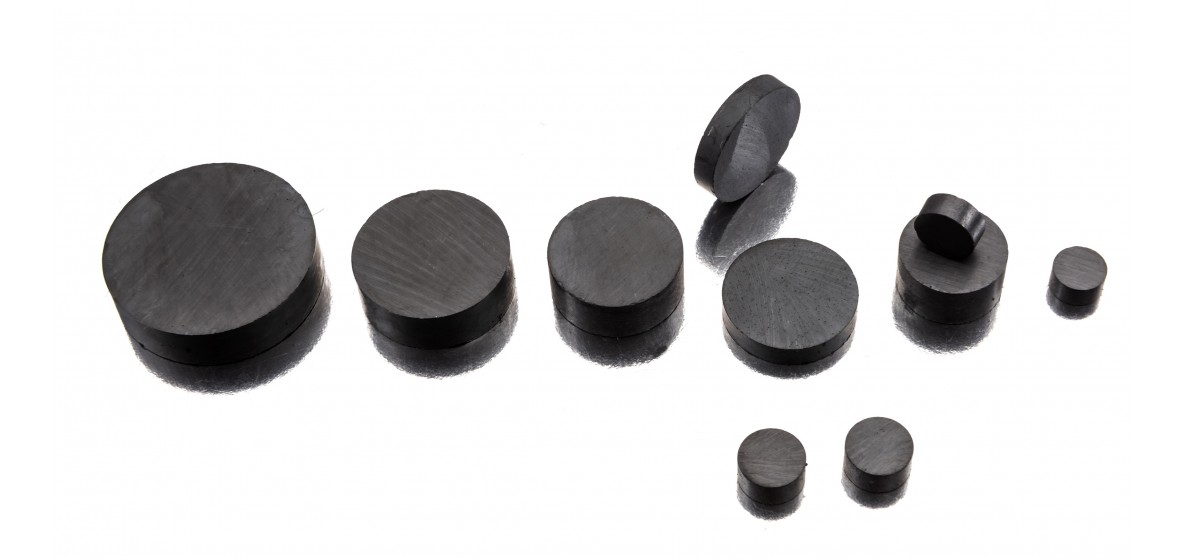Ferrite Magnets
Euromag offers you a wide range of Ferrite magnets: pots, rings, plates, disks, rings...

Euromag offers you a wide range of Ferrite magnets: pots, rings, plates, disks, rings...
12 products
Ceramic permanent magnets, also known as ferrites, are manufactured using the powder metallurgy process: pressing and sintering.
This ferrimagnetic ceramic SrO(Fe2O3)6 is obtained by calcining iron oxide and strontium carbonate under oxygen. It has a maximum energy of 1 to about 4.3 MGOe.
Ferrite is a very hard and brittle material, and difficult to machine (diamond wheels and lapping only). This material has low impact resistance, so care should be taken when handling them. They are very brittle and can easily break and expel small particles. To prevent the magnets from being attracted to each other during handling, it is advisable to place them on a soft steel base.
Ferrite magnets offer a very economical magnetic solution and are the cheapest on the market.
As far as its physical appearance is concerned, Ferrite is a dark grey metal oxide.
Due to the elements of which they are composed, Ferrites are very stable chemically and temporally. They are particularly suitable for outdoor use as they are highly resistant to corrosion and humidity thanks to the stainless steel that makes them up. They are also highly resistant to various types of chemicals. Thus, the magnetic and physical properties of ceramic magnets are resistant over time. Unlike Neodymium magnets, they do not need a coating.
When a Ferrite magnet is in contact with a soft, flat, clean and sufficiently thick steel armature, the bearing strength is optimal. It decreases in the presence of an air gap, i.e. a magnetic space between the poles of a magnet, filled with a non-magnetic material, such as wood, plastic, etc. The bearing force decreases by 0.4% per degree.
The maximum value of surface induction is, at 20%, of the order of 1500 Gauss for ferrite tablets and plates, magnetised according to thickness. This value decreases by 0.2% per degree as the temperature increases. Induction losses are reversible as long as the material is within its operating temperature range, i.e. from -40° to 250°C.
Which markets use ferrite magnets? The transport market is a major consumer of ferrite magnets, used in particular in electric motors for windscreen wipers. In other sectors, the applications are diverse: lifting magnets, hard disk brakes, loudspeakers, helmets, ABS systems, sensors, alternators, cycle lighting, magnetic shock absorbers, toys, magnetic filters, magnetic closures.
We offer a wide range of Ferrite magnets in different shapes: blocks, pellets, rings, studs... These magnets are either isotropic or anisotropic. To obtain a quality called anisotropic, the polarities are oriented during their manufacture and the particles are aligned in a single direction. Thus, anisotropic magnets have better magnetic characteristics.